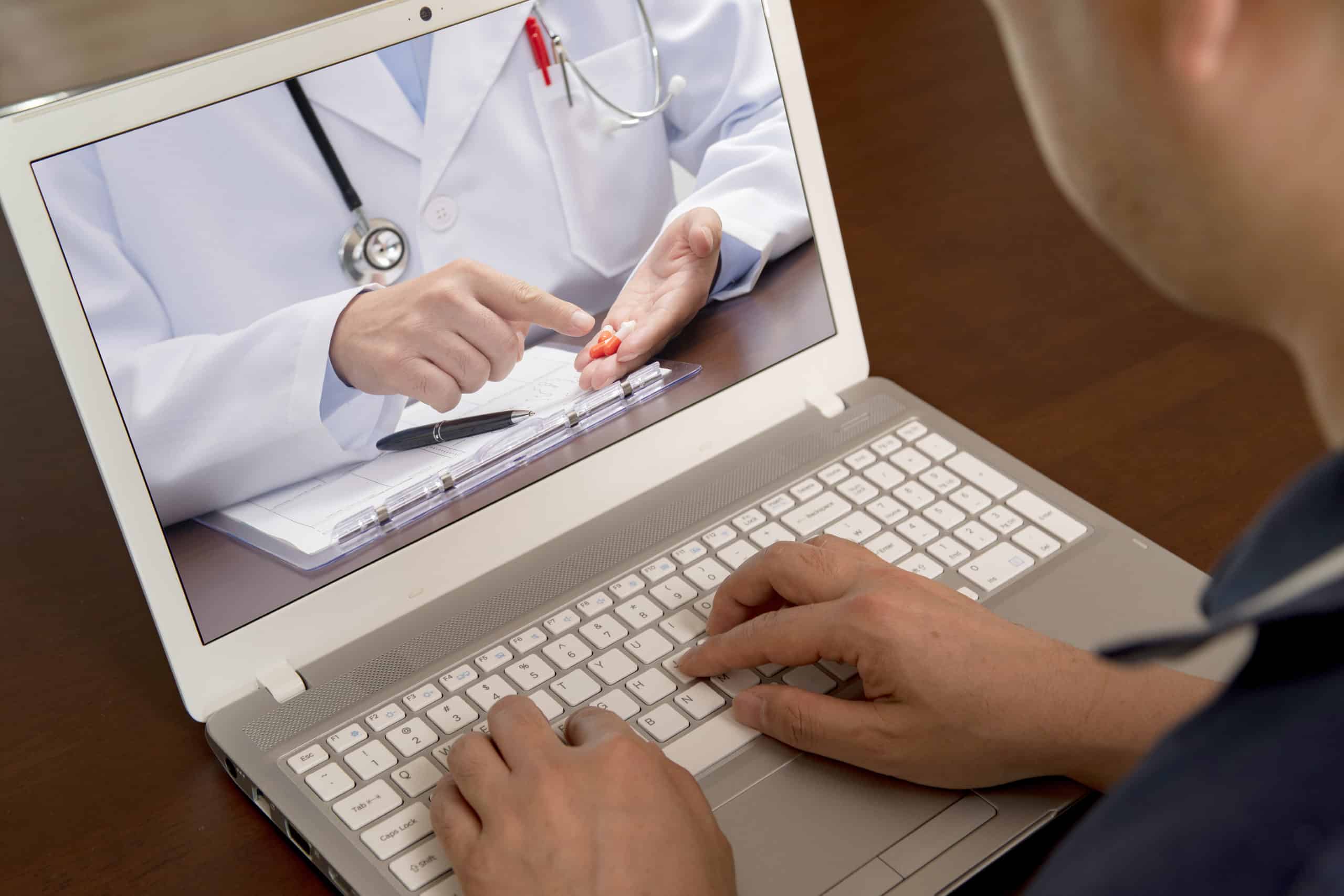 As telehealth usage continues to expand, clinicians must learn new workflows and best practices to implement these tools. Developing these skills improves the patient experience and ensures a successful telehealth service line for years to come. Fortunately, telemedicine is no longer a new technology; these tools have been in use for more than fifty years. What best practices have we gleaned from our years of working with these tools? What clearly defined telehealth etiquette has emerged for conducting the virtual visit?
As telehealth usage continues to expand, clinicians must learn new workflows and best practices to implement these tools. Developing these skills improves the patient experience and ensures a successful telehealth service line for years to come. Fortunately, telemedicine is no longer a new technology; these tools have been in use for more than fifty years. What best practices have we gleaned from our years of working with these tools? What clearly defined telehealth etiquette has emerged for conducting the virtual visit?
In-Person Exams Versus The Virtual Visit
The traditional in-person exam allows the intimacy of personal communication between doctor and patient and hands-on care delivery. But telemedicine inserts a layer of technology between the caregiver and care receiver. This filtering process is effective for bridging miles by increasing the reach of doctors to patients in remote areas. But the process also adds potential barriers between the provider and patient, something that the telehealth-reluctant physician may believe hinders healthcare outcomes.
This reluctance may be based more in a refusal to accept change than in reality-based metrics for positive healthcare outcomes. There is a large and growing body of evidence showing improved patient care outcomes, reduced costs, and higher patient satisfaction with telehealth.
Some physician reluctance may simply stem from the fact that some doctors are uncomfortable replacing an in-person exam with a videoconference. It’s true that not every healthcare encounter is appropriate for telemedicine. However, consider how many patient consults are simply routine discussions that do not require a physical exam? Reviewing lab results, routine follow-ups, or prescription refills do not typically require an on-site visit.
While the on-site clinical visit has always been crucial to patient care, one study found that patient satisfaction hinged on the perception of how the physician communicated. When comparing the traditional on-site visit to a virtual visit, the sound of the clinician’s voice and the types of questions s/he asked were rated more important than the physical presence of the doctor. In both types of visits, eye contact was rated as important to the perception of care quality. This illustrates that a strong part of the relationship between caregiver and patient is that the patient feels listened to. Providing this comfort as well as a medical diagnosis is a big part of any clinical providers job.
For the physician willing to launch a telehealth service line, or for the clinician that already participates in these types of visits, this is an important validation that some visits can be conducted virtually with the same level of care and caring as the traditional visit.
How then, is a clinical provider to conduct a virtual visit? What best practices do we know exist today for telehealth? Can these best practices ensure that quality is not lost when transitioning from a traditional on-site visit to the virtual house call?

Best Practices for the Virtual Visit
Creating a professional telehealth experience is imperative when building a new telemedicine service line. Consider these seven best practices to create a seamless clinical experience for your patients that will mirror the in-person visit.
- Choose and be trained properly on the best technology for your specialty of care. It’s important to recognize that Skype or FaceTime are not generally HIPAA-compliant. Look for a professional telemedicine vendor like OrthoLive that is specialty-centric, which will provide you with a baseline service appropriate for the type of care specific to your practice. The software should be simple to use but highly effective.Another consideration is that the quality of your Internet connection should be high; a speed of at least 1.2 Mbps is effective. Click here to read a good article on speed recommendations for common Internet activities.Finally, while the camera on your laptop may be fine, making a small investment in a good camera and microphone could improve the sound quality of the visit.
- Ensure eye contact by adjusting the webcam to eye level. The importance of eye contact is well established as a clinical care protocol. Today, though, our eye contact is often broken by the laptop or tablet serving as a note-taking device for the EHR. In the virtual visit, positioning the webcam at eye level may actually increase the amount of eye contact provided to the patient during the telehealth visit. Before conducting the visit, practice with a staff member to ensure the camera placement is exactly right. Also make it a best practice to ask the patient if they can see and hear you clearly before conducting the clinical exam.
- Consider the exam room setting just as you would in the physical practice. Clinicians should examine the room from which the visit is being launched from the patient’s perspective. What will the patient see behind the comforting face of their care provider? What kind of background noise could intrude on the visit? Does the background reflect the professionalism inherent in your practice?
- Improve visit efficiency by being on time. While this is generally a best practice even in a traditional exam, one of the biggest benefits to telehealth is that it is a time-saver for both the care provider and the patient. If a delay is inevitable, make sure there is a way to notify the patient.
- Dress appropriately for the virtual visit. We recommend the same level of professional attire as in your practice. This is especially true if you are conducting the visit from the privacy of your home office. The telehealth visit should duplicate the same level of professionalism found in your physician office address.
- Clarify your actions with the patient. For example, if you have to look down to take notes during the visit, let the patient know what you’re doing. On a video screen it may not be as obvious as when you’re in-person. Also make certain you are covering next steps with the patient, whether it is setting the follow-up, treatment instructions, or prescription ordering and pick-up.
- Finally, ask the patient for feedback on this visit. One of the most important best practices to replicate from the traditional clinical visit is to determine the patient’s level of comfort with the telehealth. This will help you improve and potentially validate that your patients are receiving the same level of care and caring as in the traditional on-premise visit.
OrthoLive offers the nation’s first telehealth application for orthopedic patients. Talk with our team about how practices just like yours have successfully transitioned to telehealth.
If you liked this article, you will also enjoy:



